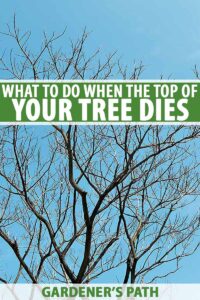Signs You Need to Cut Down Your Virginia Trees
It isn’t easy to let go of the trees. Their value to your landscape and property is huge and, naturally it’s expensive and difficult to get rid of the trees. However, if the tree is dead or damaged and cannot be saved, not eliminating it could cause additional hassles. There are other trees may be affected or the tree could be thrown over, causing injury to someone or damaging your house. Here are five indications that you should remove the tree.
Crown Dieback
The crown dieback is a sign and not a sign of a disease. It’s a sign that your tree is declining. It’s a clear indicator of declining oak especially if it’s an Oak tree, especially if it’s an older tree or is in a congested location. Different species of trees may also be affected by the disease and is often an indication that the tree is suffering from serious health issues. This is also common among trees that are suffering from diseases or insects, as well as drought. If your oaks are dying, there’s very little that you could do to help the trees. Oak decline is a normal element of the ecosystem, however, you can speed up the removal of them. Oak wood is extremely heavy and could cause a lot of harm to pets, humans or your the property if it crashes down. If you observe the leaves dying or declining in size, consider hiring experts to get rid of the tree that’s in question.
Beech Bark Disease
American beech tree is native to Virginia and is susceptible to the beech bark disease. The issue begins by a fungus that is known as the scale of beech. Insects create an entryway for the fungus to get into the tree. As the infection gets worse, it destroys the beech. The signs include a white waxy substance on the tree that are secreted by insects, and leaves that do not fully develop and then become yellow during summer. Another sign to be aware of is the vibrant orange hue of the fungus once you remove the bark. The use of fungicides and pesticides could aid in preventing the spread of the problem, but it’s a bit difficult and costly. The best option is removal of the trees affected in order to replace them.
Botryosphaeria Fungus
If you see peeling and discolored bark on your trees, they could be suffering from one of the various kinds from this fungus Botryosphaeria. It may also appear like dying or wilted branches of trees that appear good otherwise. The fungus is able to take on any of the many species of trees, from the apple tree to zelkova and is particularly fond of dead wood.
The most effective way to combat the fungus is to keep your trees in good health and under low stress. Getting rid of it could be the most effective way to ensure the safety of other trees. “There is no effective fungicides to combat botryosphaeria dieback. The best way to fight this prevalent disease is to make sure your trees are in good health by providing them with the appropriate amount of nutrients and water. It’s also crucial to prevent injuries to plants and stress,” said Elizabeth Bush who is Extension plant pathologist at Virginia Tech. Virginia Tech School of Plant and Environmental Sciences.
Thousand Cankers Disease
The infection is as serious as it can be. If you see black cankerson your tree, it is dying quickly and you notice visible tunnels that could be the disease known as thousand cankers, a tree disease discovered in Virginia. A 2011 quarantine has expired, but tree experts advise homeowners in Virginia to be on the lookout for the possibility of its reappearance. The cause of the disease is an invasive fungus that is found in the pupal chamber of a particular species of beetle. The beetles tunnel down the tree, forming the canker. If there are too many cankers, it could cause the tree to die.
Emerald Ash Borer Damage
If your ash tree shows indications of emerald ash borer damage, the most effective strategy is to eliminate it in order to substitute it for one from another species. The emerald ash borer first identified within the U.S. in Michigan in the beginning of 2000, and, since then, has spread and destroyed trees of ash across the nation. The Richmond City Richmond Department of Forestry confirmed the existence of the emerald Ash borer in the city’s boundaries in the year the year 2019.
Evidence Of Emerald Ash Borer Damage
The signs for EAB damage are:
- There are distinct D-shaped holes in the bark, where the mature insect leaves.
- S-shaped tunnels that are located on the bark’s surface.
- The growth of Sprouts at the tree’s at the base.
- Unusual behavior of woodpeckers.
- Die-back at the top of the tree.
- Vertical splits appear in the bark.
In the event that damage doesn’t seem that severe, treatment options could prevent the tree from becoming dead, but they’re not 100% certain. Get a professional’s help, as the EAB is known as a destructive insect that even experts haven’t been able to control.
Another warning to take into consideration after having a tree removed. If you cut the tree down and make use of it as firewood, you should not move it outside of Richmond. Arborists and forest managers claim that this is the way insects like the emeraldash borer or fungal diseases are spread. Make sure to use the wood in the area that the tree used to grow. It’s healthier for the environment and also to aid in the elimination of pests and diseases efforts across the globe.

